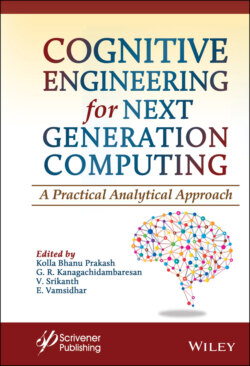Читать книгу Cognitive Engineering for Next Generation Computing - Группа авторов - Страница 26
1.5.7 Building the Corpus
ОглавлениеCorpus can be defined as a machine-readable portrayal of the total record of a specific area or theme. Specialists in an assortment of fields utilize a corpus or corpora for undertakings, for example, semantic investigation to contemplate composing styles or even to decide the credibility of a specific work.
The information that is to be added into the corpus is of different types of Structured, Unstructured, and Semi-structured data. It is here what makes the difference with the normal database. The structured data is the data which have a structured format like rows and column format. The semi-structured data is like the raw data which includes XML, Jason, etc. The unstructured data includes the images, videos, log, etc. All these types of data are included in the corpus. Another problem we face is that the data needs to be updated from time to time. All the information that is to be added into the corpus must be verified carefully before ingesting into it.
In this application, the corpus symbolizes the body of information the framework can use to address questions, find new examples or connections, and convey new bits of knowledge. Before the framework is propelled, in any case, a base corpus must be made and the information ingested. The substance of this base corpus obliges the sorts of issues that can be tackled, and the association of information inside the corpus significantly affects the proficiency of the framework. In this manner, the domain area for the cognitive framework has to be chosen and then the necessary information sources can be collected for building the corpus. A large of issues will arise in building the corpus.
What kinds of issues would you like to resolve? If the corpus is as well barely characterized, you may pass up new and unforeseen insights.
If information is cut from outside resources before ingesting it into a corpus, they will not be utilized in the scoring of hypotheses, which is the foundation of machine learning.
Corpus needs to incorporate the correct blend of applicable information assets that can empower the cognitive framework to convey exact reactions in normal time. When building up a cognitive framework, it’s a smart thought to decide in favor of social occasion more information or information because no one can tell when the disclosure of an unforeseen affiliation will lead to significant new information.
Accorded the significance set on obtaining the correct blend of information sources, several inquiries must be tended to right off the bat in the planning stage for this framework:
Which interior and exterior information sources are required for the particular domain regions and issues to be unraveled? Will exterior information sources be ingested in entire or to some extent?
How would you be able to streamline the association of information for effective exploration and examination?
How would you be able to coordinate information over various corpora?
How would you be able to guarantee that the corpus is extended to fill in information gaps in your base corpus? How might you figure out which information sources need to be refreshed and at what recurrence?
The most critical point is that the decision of which sources to remember for the underlying corpus. Sources running from clinical diaries to Wikipedia may now be proficiently imported in groundwork for the dispatch of the cognitive framework. It is also important that the unstructured data has to be ingested from the recordings, pictures, voice, and sensors. These sources are ingested at the information get to layer (refer figure). Other information sources may likewise incorporate subject-specific organized databases, ontologies, scientific classifications, furthermore, indexes.
On the off chance that the cognitive computing application expects access to exceptionally organized information made by or put away in different frameworks, for example, open or exclusive databases, another structure thought is the amount of that information to import at first. It is additionally essential to decide if to refresh or invigorate the information intermittently, consistently, or in light of a solicitation from the framework when it perceives that more information can assist it with giving better answers.
During the plan period of an intellectual framework, a key thought is whether to build a taxonomy or ontology if none as of now exists for the specific domain. These types of structures not only streamline the activity of the framework, but they also make them more productive. In any case, if the designers are accountable for guaranteeing that an ontology and taxonomy is absolute and fully updated, it might be progressively viable to have the framework constantly assess connections between space components rather than have the originators incorporate that with a hard-coded structure. The performance of the hypothesis generation and scoring solely depend on the data structures that have been chosen in the framework. It is in this manner prudent to demonstrate or reenact regular outstanding tasks at hand during the planning stage before focusing on explicit structures. An information catalog, which incorporates metadata, for example, semantic data or pointers, might be utilized to deal with the basic information all the more productively. The list is, as a deliberation, progressively smaller what’s more, for the most part, quicker to control than a lot bigger database it speaks to. In the models and outlines, when alluding to corpora, it ought to be noted that these can be coordinated into a solitary corpus while doing so will help disentangle the rationale of the framework or improves execution. Much like a framework can be characterized as an assortment of littler incorporated frameworks, totaling information from an assortment of corpora brings about a solitary new corpus. Looking after isolated corpora is ordinarily accomplished for execution reasons, much like normalizing tables in a database to encourage inquiries, instead of endeavoring to join tables into a solitary, progressively complex structure.
